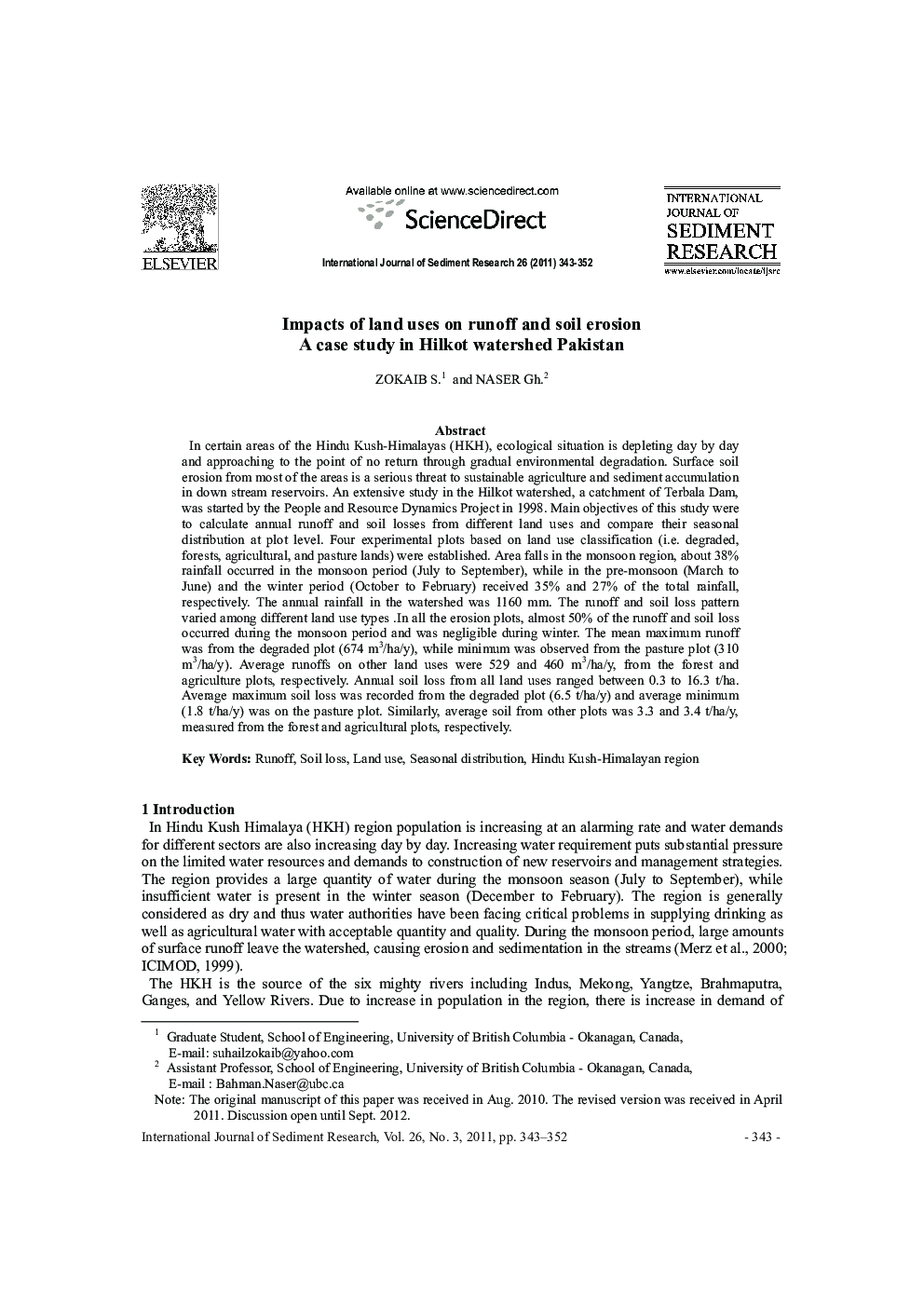| کد مقاله | کد نشریه | سال انتشار | مقاله انگلیسی | نسخه تمام متن |
|---|---|---|---|---|
| 4712635 | 1638116 | 2011 | 10 صفحه PDF | دانلود رایگان |

In certain areas of the Hindu Kush-Himalayas (HKH), ecological situation is depleting day by day and approaching to the point of no return through gradual environmental degradation. Surface soil erosion from most of the areas is a serious threat to sustainable agriculture and sediment accumulation in down stream reservoirs. An extensive study in the Hilkot watershed, a catchment of Terbala Dam, was started by the People and Resource Dynamics Project in 1998. Main objectives of this study were to calculate annual runoff and soil losses from different land uses and compare their seasonal distribution at plot level. Four experimental plots based on land use classification (i.e. degraded, forests, agricultural, and pasture lands) were established. Area falls in the monsoon region, about 38% rainfall occurred in the monsoon period (July to September), while in the pre-monsoon (March to June) and the winter period (October to February) received 35% and 27% of the total rainfall, respectively. The annual rainfall in the watershed was 1160 mm. The runoff and soil loss pattern varied among different land use types. In all the erosion plots, almost 50% of the runoff and soil loss occurred during the monsoon period and was negligible during winter. The mean maximum runoff was from the degraded plot (674 m3/ha/y), while minimum was observed from the pasture plot (310 m3/ha/y). Average runoffs on other land uses were 529 and 460 m3/ha/y, from the forest and agriculture plots, respectively. Annual soil loss from all land uses ranged between 0.3 to 16.3 t/ha. Average maximum soil loss was recorded from the degraded plot (6.5 t/ha/y) and average minimum (1.8 t/ha/y) was on the pasture plot. Similarly, average soil from other plots was 3.3 and 3.4 t/ha/y, measured from the forest and agricultural plots, respectively.
Journal: International Journal of Sediment Research - Volume 26, Issue 3, September 2011, Pages 343-352